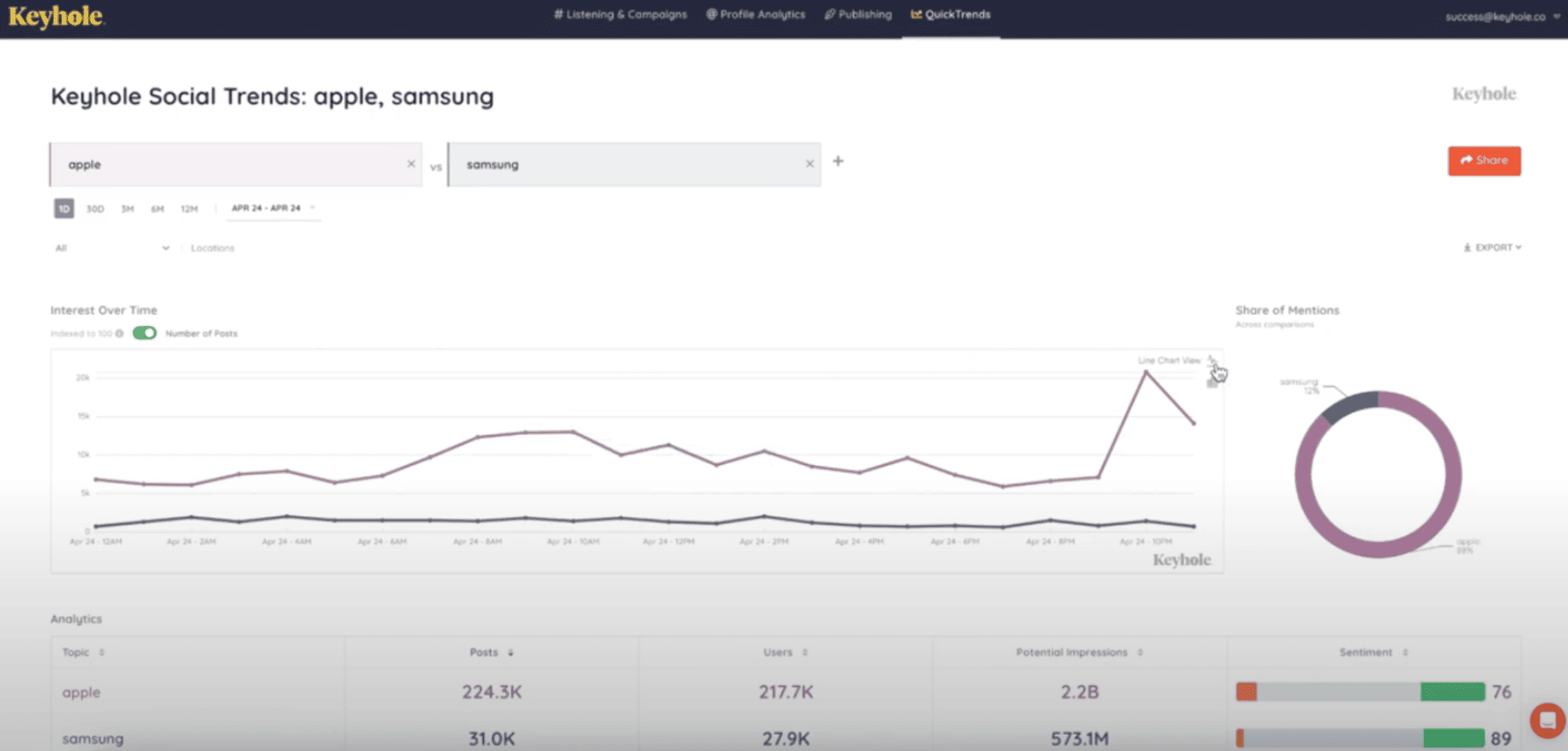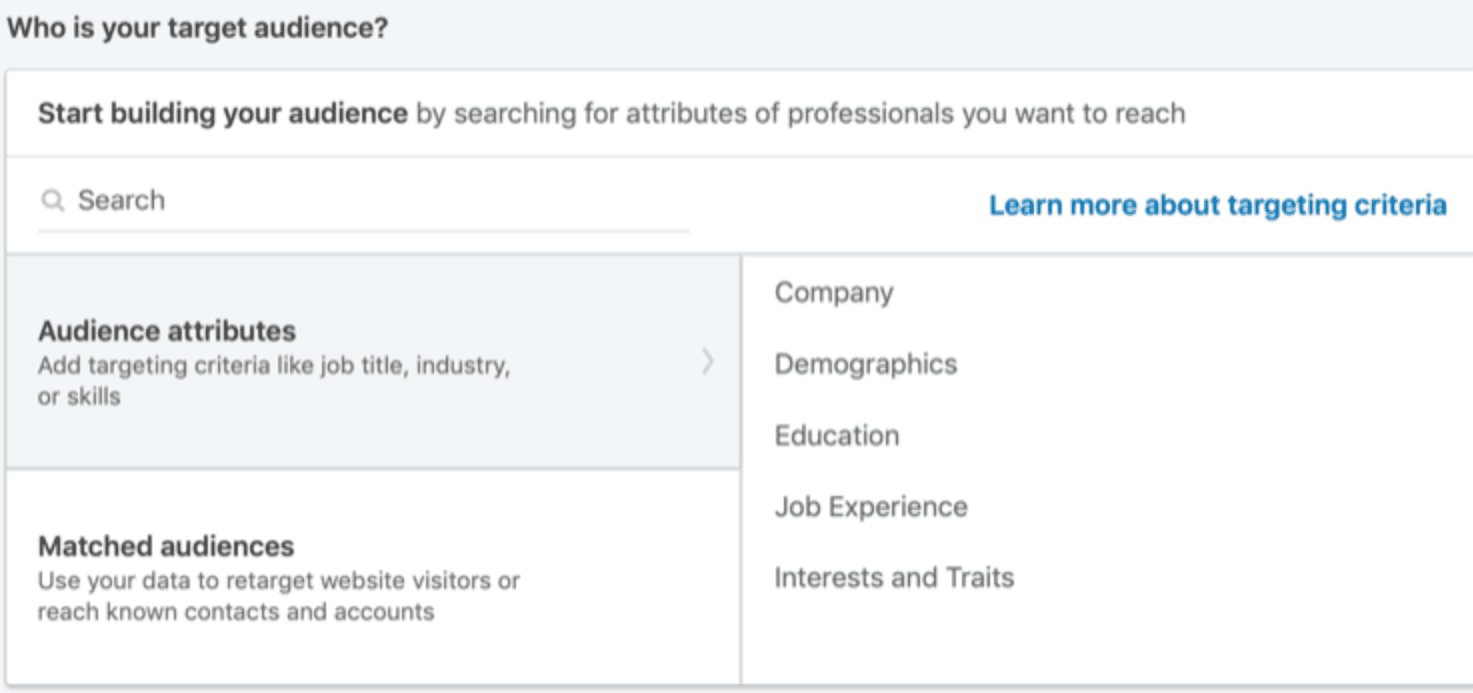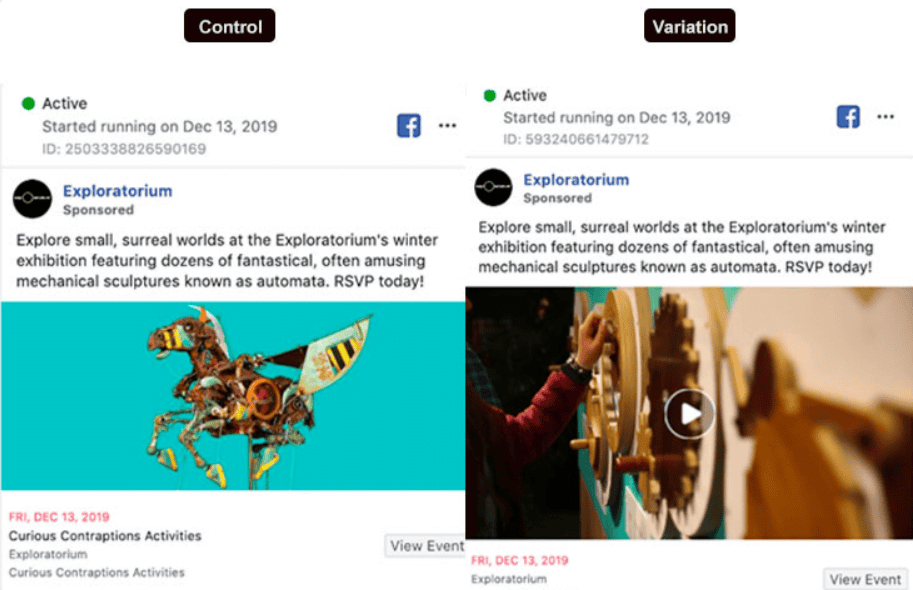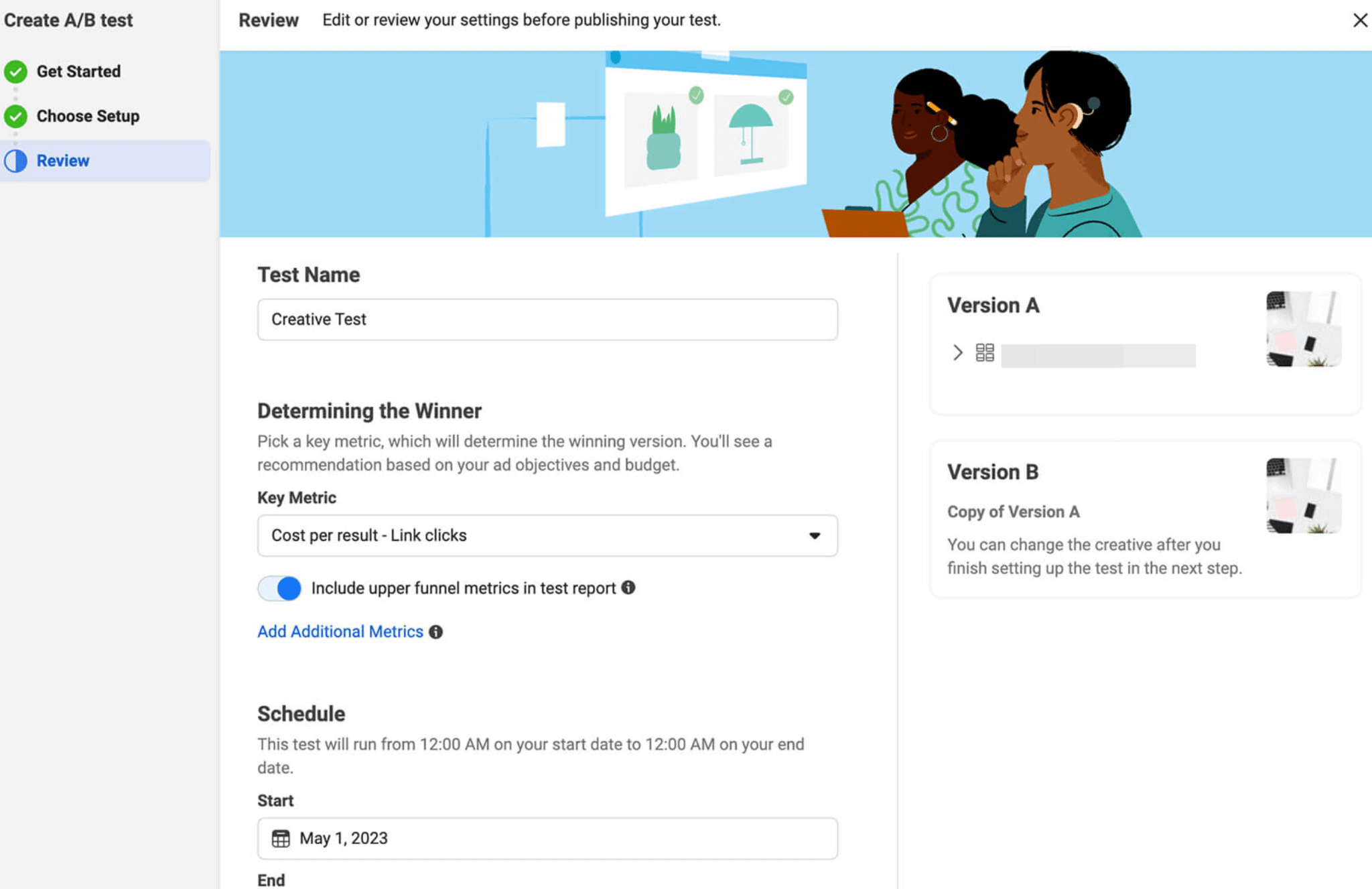If you know anything about social media, you know that change is inevitable. New trends constantly emerge, features and algorithms change, and so does what catches people’s attention. That means your social media strategy will need to continually evolve along with it.
Brands that are successful with socials know this, and one approach they adopt is A/B testing. A/B testing on social media is an effective way to create content that resonates with your target audience. It takes away the guesswork and ensures you make data-driven decisions.
This article will show you how to use this marketing experiment to improve your social media lead generation.
9 Steps to Implement A/B Testing in Your Social Media Campaign
The basic approach to A/B testing on social media has remained the same over time. You test small variations, one at a time, to know what resonates with your target audience.
The difference is that, with social media, you don’t have to wait long to get the result of the experiment. With real-time audience feedback, you can quickly effect change.
Follow these steps to conduct a successful social media testing.
1. Do Your Research
There is certain information you need to gather before conducting an A/B test. Otherwise, you will have a scattergun approach and produce results that are not particularly valuable.
Start by analyzing your current social media performance. Evaluating how your content is doing will give you a baseline against which to measure your A/B test. Consider social media metrics like engagement, reach, click-through rate, conversion rate, and lead acquisition to determine what aspects of your strategy need improvement.
Next, perform a competitor analysis. Check out your competitors to see what they’re doing well and what you can learn from them. You will want to keep an eye out for the type of content they’re posting, their hashtags, posting times, their engagement, and reach.
A social listening tool like Keyhole can help you monitor the performance of your competitors’ social channels. Then, you can see what type of posts get traction for them, which can inform your A/B testing strategy.

Screenshot taken from Keyhole
The final step of your research will be to review the social landscape in your niche. Identify the most popular social media platforms, hashtags, content types, and trends. Use Google Trends, social media analytics, and keyword research tools like SEMrush and AHrefs to speed up this process.
Completing this research enables you to develop effective A/B test hypotheses and increases the chances of getting accurate results.
2. Determine Your Testing Goals and Metrics
The goal of your A/B test will likely be influenced by the result of your research in step one, so get it right. Now that you have the above information, what do you want to achieve with the experiment?
In this case, the goal is to improve your social media lead generation efforts. So, metrics like click-through rate, conversion rate, engagement rate such as comments and video views, bounce rate, and cost per lead will be used to measure the test success.
Distinguishing between different stages such as Leads vs Prospects vs Opportunities can further help to better target your strategies.
With a clear objective, you can design A/B test variations in a targeted manner, making your results more meaningful and actionable.
3. Identify and Segment Your Target Audience
The next step is to determine and segment the people who will engage with your content during the test. To identify your target audience, consider the following:
- Their demographic and psychographic characteristics, such as age, gender, location, interests, and behaviors.
- The best platforms for reaching them.
- Their preference and behaviors on these platforms.
For example, if you are a remote recruitment company, your target audience will be decision-makers like HR managers, recruiters and, small business owners. These individuals spend the most time on LinkedIn and X (formerly Twitter). Their activities on these platforms might include networking, sharing job postings, and keeping up with industry trends.
Once you have successfully identified them, segment them. This is important because even though they are all looking for new talents, they have different needs.
One way to segment your audience is by using native social media targeting tools. For instance, LinkedIn has built-in targeting tools that allow you to filter and segment by company size, industry, and much more (shown below).

Screenshot taken from Social Media Examiner
Also, X allows users to create lists to separate followers into specific categories, like what stage they are in the buyer’s journey. This way, you can view their posts within a specific channel and understand what they like.
Another way to segment your audience is by posting at different times of the day. Staying with our remote recruitment agency example, your followers will be spread across different geographic regions. That means the ones in the central United States may see the control variable, and your Australian audience will see the variation.
Identifying and segmenting your audience lets you create better-targeted ads and test variables, resulting in more meaningful and insightful results.
4. Establish Your Variables
At this stage, you need to decide what elements of your social media content you want to A/B test. There are many options, but some common ones include:
Post text
You can test a range of post text varieties. For example, you can experiment with posts of different lengths to discover the perfect post length for your community. You may also assess which post style they respond positively to—questions, quotes, statistics, etc.
Also, you can use an A/B test to find out whether using emojis will go down well with your followers. What’s more, you can test the tone of voice that your audience will prefer.
Take these posts by The New Yorker, for example. Their elements are similar, except for the text of each post, which has varying lengths. An A/B test can help you decide which copy length is ideal.

Screenshot from Social Tradia
Image/video
While visuals (image or video) generally perform better than text, whether you use them will depend on your audience preference. So, can experiment to discover which visual content your followers consume more or if they prefer it to text.
The more specific you are, the better. For example, you can find out exactly what kind of image your audience fancy—regular images, GIFs, infographics, etc. You can also do the same for video elements. For example, with video lengths, you can experiment with shorter clips versus longer videos to see what captivates them more.
Exploratorium replaced an image with a video to see if exploring different multimedia formats would increase user engagement. Different segments of their audience will see the same content but with varied formats. After the test, they can measure each format’s impact on user engagement.

Screenshot from Socialtradia
Headlines and description
Your landing page headline and description are quite visible, so consider how people will interact with them on social media. Test the headline in the preview to differentiate it from the one on your website. Also, you can add a hook to encourage readers to take action.
Ad format
Social media ads have become a vital component in every marketer’s arsenal. Experimenting with different formats will help you discover the most effective ones to achieve better results.
For example, with Facebook advertising, a carousel ad may be more effective for brand awareness, while testimonial videos may be perfect for product announcements.
Lead magnet
Another element worth testing is the type of lead magnet or gated content offer you use to capture leads. They are a powerful way to grow your email list and nurture relationships with potential customers. Hence, your lead magnets need to be enticing and offer value.
For example, let’s say you are a cloud service provider. Then, you could test promoting an ebook on types of cloud migration strategies versus a checklist on securing your cloud infrastructure.
Additionally, considering how you are designing your invoices can also impact conversions, as clear and professionally designed invoices can enhance trust and credibility among your new sign-ups.
Calls to action
The call to action (CTA) is where you tell readers what you want them to do—for example, sign up for your newsletter or shop now. Therefore, you must get it right. Use A/B testing to experiment with different CTAs till you find one that works.

Screenshot from Gotvantage
These two posts by Scoro have the same copy, structure, and image, except for the CTA. The one on the left reads, ‘Learn More,’ and the second says, ‘Sign Up.’ Of these two CTAs, the one that says Sign Up is more compelling because it clearly states what action you want the reader to take next.
5. Develop Your Hypothesis
During this phase, you will create two or more versions of your social media content or ad. Each will have a particular difference that you hypothesize will affect their success based on your goals.
Assume you are trying to use a free ebook download to get people to sign up for your email list. In that case, you may hypothesize that to get their attention, your copy needs to be written in a more conversational tone.
So your control variable and its variation will have the same image, link, CTA, and hashtag. However, the writing style would be different. That means you could have something like this:
- Control variable A: Get our free ebook on lead generation and see your conversion rates skyrocket. Download Now!
- Variation B: Are you tired of losing prospects to your competitors? Do you want a flowing pipeline of leads? You probably answered yes. And why won’t you? Every business understands that lead generation is the lifeblood of their success. That’s why we created this ebook to give you the essential tools. Download Now!
Keep in mind that you need to focus on one element to increase the chances of success. So consider the element you think can make the most difference. That could be the headline, image, CTA, or as in the example above, the copy.
Too many changes within a single variation can lead to complications, making it difficult to identify which component influenced the observed result.
In addition, find a balance between making your variations unique but not too different that they are unrecognizable as part of the same test.
6. Choose a Good Sample Size
One other important factor you need to consider before you run the split test is the sample size. If it is too small, it may skew results and affect your ability to make informed decisions.
Therefore, ensure it is large enough to provide reliable results. You should also consider who makes up your sample audience. Ensure that they are your target demographics and are well-represented in your test sample.
7. Execute the Test
If you have followed every step above correctly, running the test should be straightforward.
For a chosen period, you will implement your A/B test to evaluate the impact of writing your copy in a generic way versus conversationally.
You will schedule each post to be published at the same time and day of the week for your audience segments. This guarantees comparable conditions for publication schedule and content.
Throughout this period, you will carefully record your defined metrics, such as click-through rate, engagement rate, conversion rate, and cost per lead for both variations. This will provide solid data to determine the effectiveness of each copy strategy in attracting your audience.
During this meticulously planned trial period, you will be able to make informed decisions on how to adjust your copy strategy to improve your social media lead generation efforts.
Social media sites like Facebook help you simplify this process by showing each version of your content to a segment of your audience. The platform ensures nobody sees both, and then determines which version performed best.

Screenshot from Social Media Examiner
8. Track and Analyze the Result
Once you have successfully carried out the A/B test, the next step is to analyze the outcome. Start by comparing the key metrics of both variants. That means you will compare the click-through rate, conversion rate, cost per lead, and other metrics you defined earlier on.
Afterward, you will evaluate meaningful statistics. Use a data analytics tool to ascertain whether there is a statistical significance in metrics.
You will also conduct a qualitative feedback analysis to assess the quality and tone of the interaction. Qualitative comments offer useful insights into how the audience responds to the content. Cloud call center software can help in this regard.
Several cloud-based call center solutions like Salesforce and LiveAgent allow integration with social media to gather feedback from various channels and analyze sentiment.
After completing your analysis, it is time to pick a winner.
9. Choose the Winning Variation
Based on the numbers presented to you, you can make an informed decision. Of course, choose the variation that led to an increase in lead generation. For example, if you were able to get more people to download your ebook by writing conversationally, you should consider adopting this style.
However, keep in mind that there is always room for optimization on your winning variation. Examine the data from your test to discover any trends that indicate areas for improvement.
Key Takeaways
One of the secrets to success in social media marketing is to always be open to change. No matter how well you think you know your audience, they will surprise you.
Things move fast on social media, so you must also be adaptable. A/B testing enables you to constantly refine your strategy and remain competitive. Follow the steps above to implement this marketing experiment into your campaigns.

